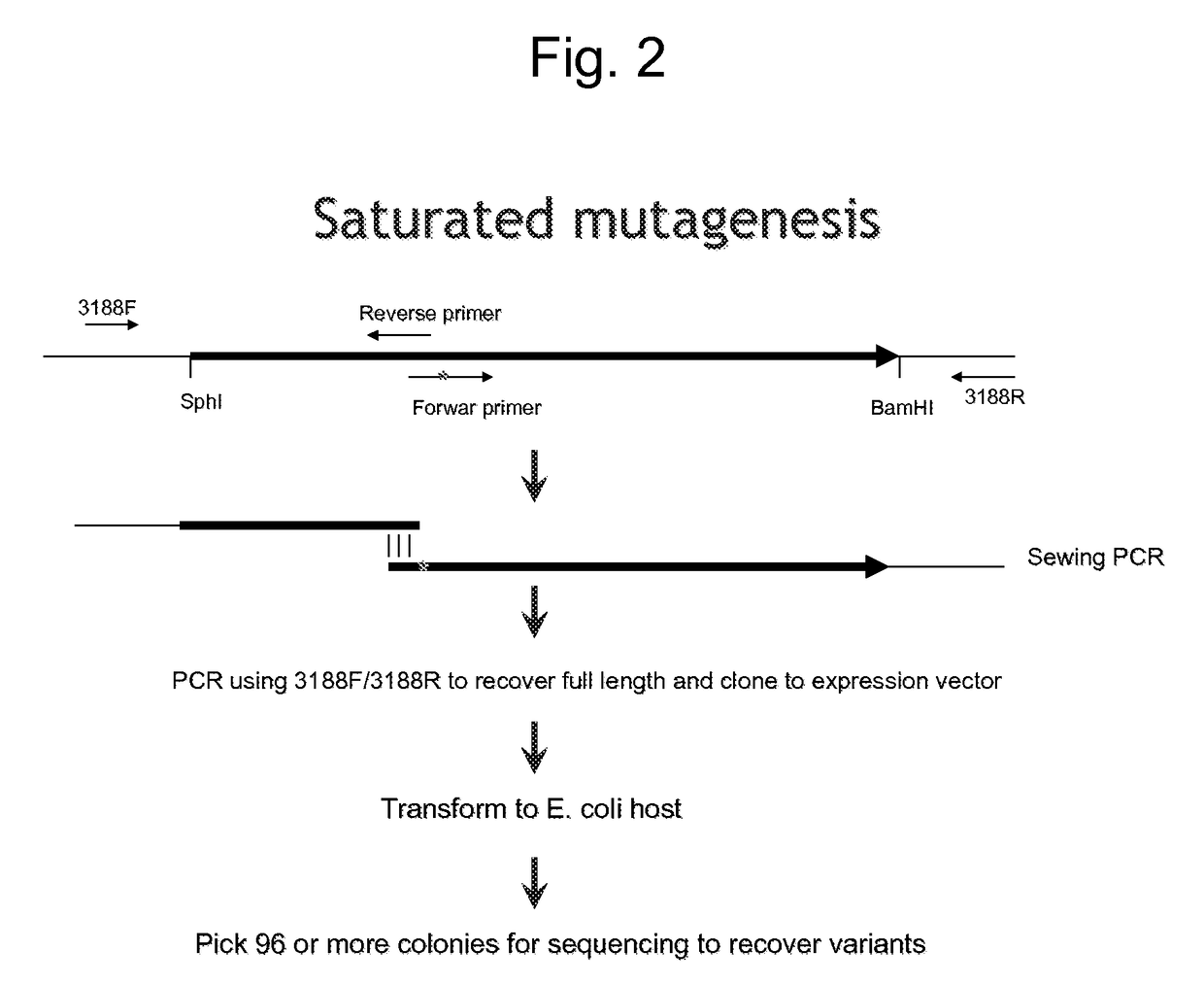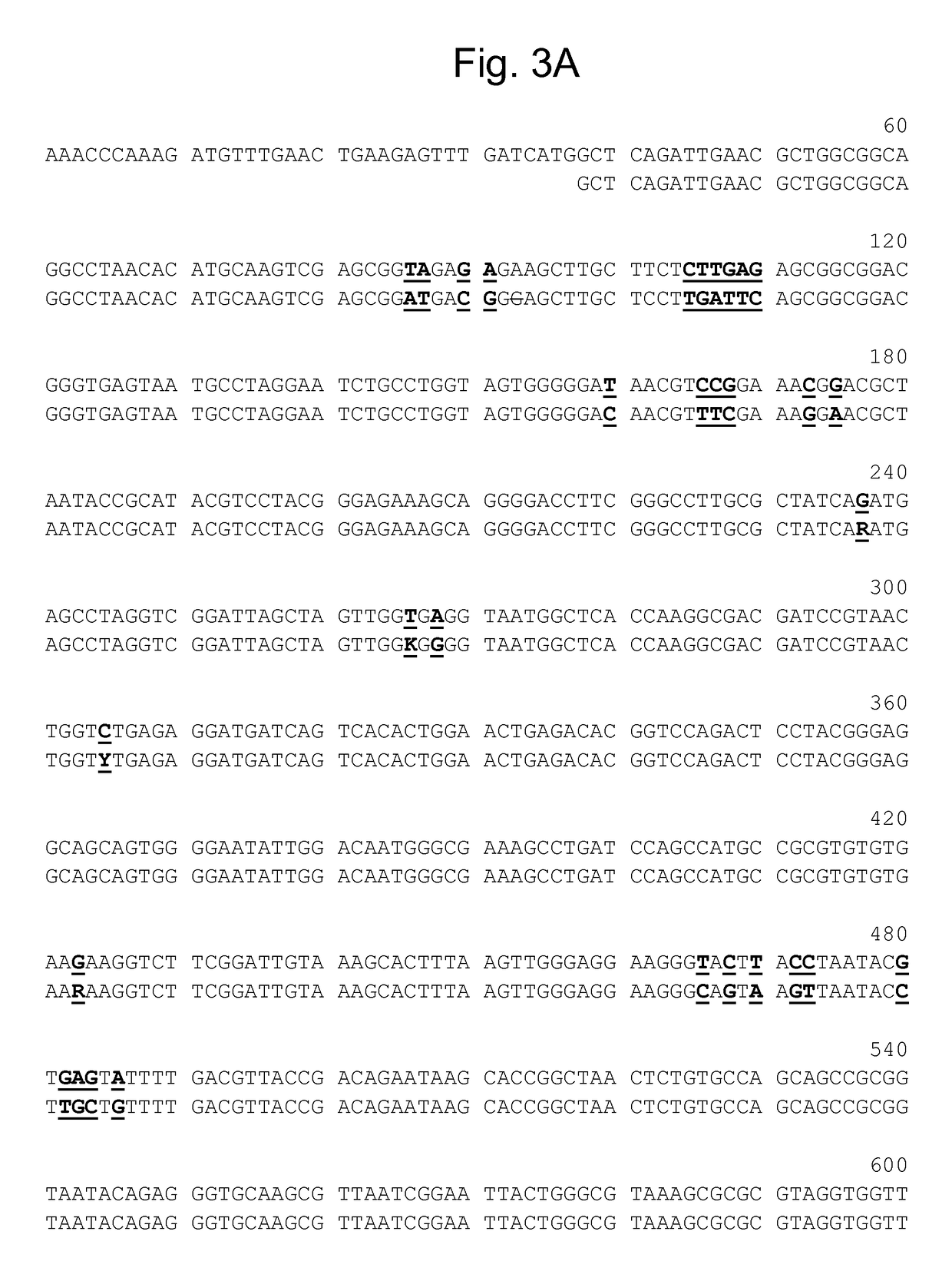Insecticidal proteins and methods for their use
a technology of insecticidal proteins and methods, applied in the field of molecular biology, to achieve the effects of balanced amino acids, improved oil profile, and increased yield
- Summary
- Abstract
- Description
- Claims
- Application Information
AI Technical Summary
Benefits of technology
Problems solved by technology
Method used
Image
Examples
example 1
Identification of an Insecticidal Protein Active Against Lygus from Strain SS44C4
[0558]The Lygus active protein PIP-1A was identified by protein purification, N-terminal amino acid sequencing, PCR cloning from Pseudomonas chlororaphis strain SS44C4 as follows:
[0559]Insecticidal activity against Lygus (Lygus hesperus) was observed from a cell lysate of SS44C4 grown in Trypticase soy medium (Tryptone 17 g / L, enzymatic digest of soy meal 3 g / L, Dextrose 2.5 g / L, Sodium Chloride 5 g / L, K2HPO4 2.5 g / L) and cultured overnight at 30° C. This insecticidal activity exhibited heat and proteinase sensitivity indicating proteinaceous nature.
[0560]Lygus (Lygus hesperus) bioassays were conducted using the cell lysate samples mixed with insect diet (Bio-Serv F9644B) in each well of a 96 well bioassay plate (BD Falcon™ 353910). A variable number of Lygus hesperus second instar nymphs (2 to 7) were placed into each well of a 96 well plate. The assay was run four days at 25° C. and then was scored fo...
example 2
E. coli Expression of PIP-1A, PSEEN3174 and PIP-1B
[0565]The three coding sequences, PIP-1A (SEQ ID NO: 1); PSEEN3174 (SEQ ID NO: 5); & PIP-1B (SEQ ID NO: 3), were subcloned into an E. coli expression vector pMAL™ (New England Biolabs, 240 County Road, Ipswich, Mass. 01938-2723) having a 6×His tag added to the Maltose Binding Protein and transformed into E. coli for recombinant protein expression. E. coli cells transformed with the expression constructs were grown overnight at 37° C. with carbenicillin selection and then inoculated to a fresh 2XYT medium (1:250) and further grown to OD600 ˜0.8. IPTG was then added and the cells were grown further at 37° C. for another 6 hours or transferred to 16° C. for overnight growth to induce protein expression. The E. coli expressed proteins were purified either by Amylose resin (New England Biolabs, 240 County Road, Ipswich, Mass. 01938-2723) or Ni-NTA agarose (Cat. No. K950-01, Invitrogen, 3175 Staley Road, Grand Island, N.Y. 14072), accordin...
example 3
Lepidoptera and Coleoptera Assays with Purified Proteins
[0566]Insecticidal activity bioassay screens were conducted on the cell lysate to evaluate the effects of the insecticidal proteins on a variety of Lepidoptera species (European corn borer (Ostrinia nubilalis), corn earworm (Helicoverpa zea), black cutworm (Agrotis ipsilon), fall armyworm (Spodoptera frugiperda), Soybean looper (Pseudoplusia includens) and Velvet bean caterpillar (Anticarsia gemmatalis)), a Coleoptera specie (Western corn rootworm (Diabrotica virgifera)
[0567]Lepidoptera feeding assays were conducted on an artificial diet containing the cell lysates of bacterial strains in a 96 well plate set up. The cell lysate was incorporated with the Lepidopteran-specific artificial diet in a ratio of 1:2 cell lysate to diet mixture. Neonate larvae were placed in each well to feed ad libitum for 5 days. Results were expressed as positive for larvae reactions such as stunting and or mortality. Results were expressed as negati...
PUM
| Property | Measurement | Unit |
|---|---|---|
| width | aaaaa | aaaaa |
| resistance | aaaaa | aaaaa |
| nucleic acid | aaaaa | aaaaa |
Abstract
Description
Claims
Application Information
 Login to View More
Login to View More - R&D
- Intellectual Property
- Life Sciences
- Materials
- Tech Scout
- Unparalleled Data Quality
- Higher Quality Content
- 60% Fewer Hallucinations
Browse by: Latest US Patents, China's latest patents, Technical Efficacy Thesaurus, Application Domain, Technology Topic, Popular Technical Reports.
© 2025 PatSnap. All rights reserved.Legal|Privacy policy|Modern Slavery Act Transparency Statement|Sitemap|About US| Contact US: help@patsnap.com



